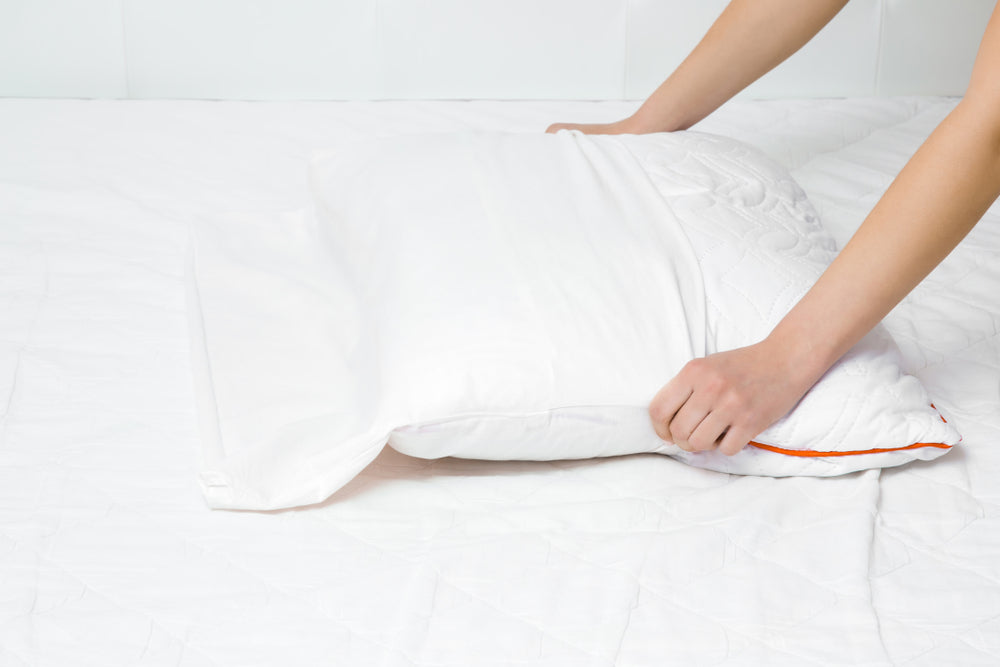Free U.S. Shipping On Orders Over $150

5 Ways Your Pillowcase Could be Ruining Your Skin and Hair
Posted on
You spend several hours at night laying on your pillow. So it’s not surprising that your pillowcase is a big deal when it comes to the state and health of your skin.
If you are meticulous with your skin care but still experience skin issues like frequent acne breakouts and dry skin, your pillowcase could be undoing all the good work you are doing.
In this post, we explain 5 ways your pillowcase could be ruining your skin as well as your hair, plus what to do about it.
1. Your Pillowcase Is Clogging Your Pores
If it’s been more than a week since you changed your pillowcase, then it’s dirtier than you think. You are sleeping on a soup of dead skin cells, body oils, dirt, bacteria, dust mites and all other kinds of icky stuff.
Some of these come from the environment and some of it also comes from your skin. You shed dead skin cells on your bedding, leave body oils on it and don't forget sweat and any skin products you’ve applied. As they build up, they start to transfer back onto your skin when you sleep.
They clog your pores, increasing the risk of an acne breakout. And if bacteria also gets into your pores, you could get a more painful form of acne called cystic acne.
By the way, these breakouts can also form on your hair as the hair follicles become clogged with sebum, dirt and bacteria. If infected, scalp breakouts can get quite painful.
What to do about it: Change your pillowcase at least once a week. To be safe, and considering this is your face at risk, do it twice a week. If you have extra-sensitive skin or often get night sweats, do it every other day.
2. Your Pillowcase is Drying Out Your Skin and Hair
If you have a cotton pillowcase, you should probably switch it for another material.
While cotton is breathable and stays cool, we do not recommend sleeping on a cotton pillowcase. Cotton is highly absorbent. So it easily sucks moisture and oils off your skin, including any moisturizer you’ve applied. By morning, your skin is dry.
Dry skin ages faster, is more vulnerable to damage and problems like acne, and it also looks duller. Cotton also dries out hair, making it more fragile and frizzy.
What to do about it: Silk is the best material for pillowcases. It is super soft and doesn't dry out your skin. Bamboo is also a good pick if you are looking for something more affordable.
3. Your Pillowcase is Making Your Skin Age Faster
Your pillowcase may feel smooth to your hand, but it’s probably too rough on your face. And as you toss and turn in bed, there’s constant friction on your skin.
This friction ages your skin faster, causing fine lines and wrinkles. It can also lead to friction acne (acne mechanica).
What to do about it: Silk is the most skin-friendly material for pillowcases. It causes minimal friction, which keeps your skin looking younger. If you are on a budget, bamboo pillowcases are also good for the skin. Some people recommend satin pillowcases for skin. While satin, a synthetic material, is smooth, it gets hot, traps sweat and can cause other skin problems.
4. Your Pillowcase Is Making Your Scalp Itchy
If you don't change your pillowcase often, all the dirt and sebum that accumulates on your pillow also gets on your hair. This creates the perfect breeding ground for bacteria and fungi, which can lead to an itchy scalp.
What to do about it: Change your pillowcase often, at least once or twice a week.
5. Your Pillowcase Can Cause or Worsen Hair Loss
If you have a cotton pillowcase that sucks moisture out of your hair, it can cause or accelerate hair loss. Dry hair is brittle and more vulnerable to thinning.
Constant friction with your pillowcase is also bad for your hair. It can worsen hair loss and breakage.
What to do about it: A silk pillowcase is not just great for your skin; it’s also the best for your hair. It causes minimal friction and doesn't dry out your hair.
Quick links
Contact
6063 Hudson Road #160
Woodbury, MN 55125
Yo@hercLeon.com
Leave a comment: